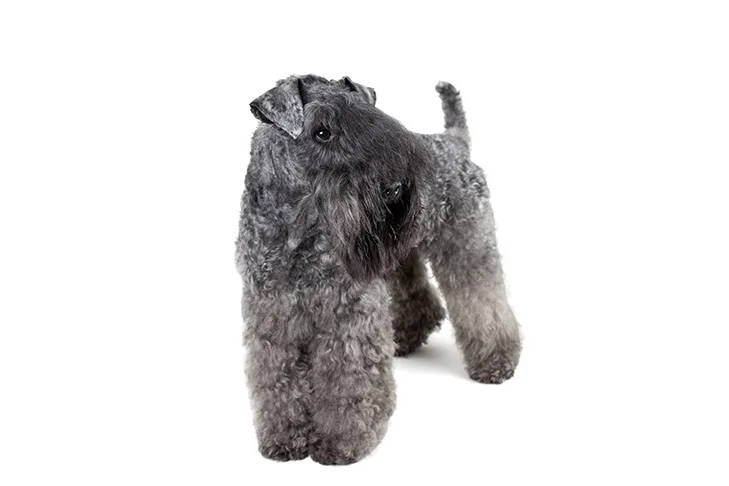The Kerry Blue Terrier is well-known for his eye-catching blue coat. This former farm dog, named for the Irish county where he was born, is now an alert, flexible, and energetic watchdog and family companion. Of course, we start with the eye-catching coat that Kerries wears everywhere she goes. It comes in a variety of blue colors, from deep slate to light blue-gray, and is so soft that it’s as lovely to the touch as it is to the eye. The thick coat hides a powerful, well-developed physique that stands under 20 inches at the shoulder and weighs up to 40 pounds. The majesty of the long terrier head is enhanced by a sporting beard and dark, alert eyes.
Kerry Blue Terrier
Average sizes and life
expectancy of the breed.
Height
18-19.5 inches (male)
17.5-19 inches (female)
Weight
33-40 pounds (male)
females weigh proportionately less than males
Life Expectancy
12-15 years
Breed Traits & Characteristics
About the Breed

Owning a dog is not just a privilege; it’s a responsibility. They depend on us for, at minimum, food and shelter, and deserve much more. When you take a dog into your life, you need to understand the commitment that dog ownership entails.
 Health
Health
 Grooming
Grooming
 Exercise
Exercise
 Training
Training
 Nutrition
Nutrition
History
The Kerry takes its name from its home county. The uncertainty of its origins inspired amusing blarney about leprechauns, shipwrecks, and other fantastic origin stories. We do know that Kerries were hardworking agricultural dogs known for their flexibility. The breed was a mascot for nationalists throughout the Irish independence fight, and they’ve been top show winners since the early twentieth century. Mick, a Kerry, was one of the finest show dogs of the 2000s.


